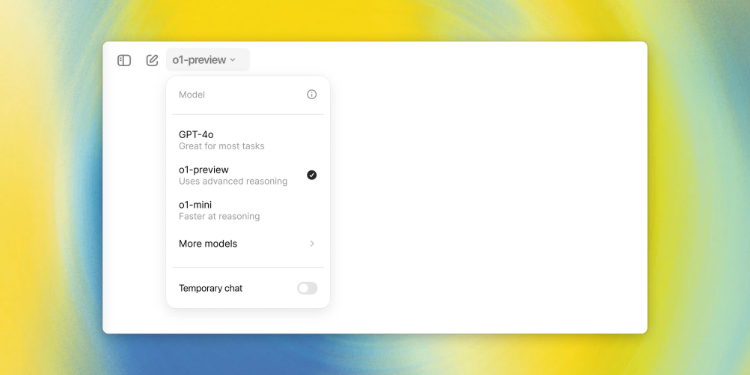OpenAI has introduced a new series of AI models, known as OpenAI o1, designed to excel at solving complex tasks by spending more time thinking before responding.
This series represents a significant leap forward, particularly in fields such as science, coding, and math, where advanced reasoning is crucial.
The first of these models, o1-preview, is now available in ChatGPT and the API. Although it’s an early version, OpenAI has committed to regular updates and improvements.
These models have been trained to think through problems in a manner that mirrors human reasoning, refining their strategies, and learning from mistakes.
According to internal tests, this model performs on par with PhD students in benchmarks for physics, chemistry, and biology, excelling particularly in math and coding.
For example, in a qualifier for the International Mathematics Olympiad, GPT-4o solved just 13% of the problems, while the o1 reasoning model achieved an impressive 83%. Additionally, its coding abilities reached the 89th percentile in Codeforces competitions, making it a powerful tool for developers.
Despite its early release, the o1-preview model does not yet feature web browsing or the ability to upload files or images. However, it is expected to be more capable for complex tasks compared to GPT-4o.
OpenAI’s decision to name this new series “o1” signifies the resetting of their model counter, marking a fresh start in AI development.
To enhance safety, OpenAI has implemented a new training method that allows the model to better follow safety guidelines by reasoning about them.
This has resulted in a higher resistance to jailbreaking attempts, with o1-preview scoring 84 out of 100 in their hardest tests—far surpassing the 22 scored by GPT-4o.
In line with these advancements, OpenAI has increased its safety measures by collaborating with U.S. and U.K. AI Safety Institutes, granting them early access to the model for evaluation. This partnership aims to ensure that future models undergo rigorous testing before public release.
The o1 series is positioned to be particularly valuable for tackling complex problems in various sectors. In healthcare, for instance, it can assist researchers in annotating cell sequencing data, while in physics, it helps generate intricate formulas for quantum optics. Developers across industries can use it to build and execute complex multi-step workflows.
For more cost-effective solutions, OpenAI has also launched o1-mini, a smaller, faster version of o1-preview, optimized for coding tasks.
This model is 80% cheaper than its larger counterpart, making it a highly efficient option for developers needing reasoning power without requiring extensive world knowledge.
Both o1-preview and o1-mini are available today for ChatGPT Plus and Team users, with rate limits in place. ChatGPT Enterprise and Edu users will gain access next week, and developers qualified for API usage tier 5 can start working with these models immediately.
As OpenAI continues to develop its o1 series, future updates will bring additional features like browsing, file uploading, and image capabilities. This marks the start of a new chapter in AI, with OpenAI pushing the boundaries of what reasoning models can achieve.
The launch of the o1-preview and o1-mini models reflects a major step forward in AI capabilities, especially for professionals in fields requiring complex problem-solving.
Marketers, developers, and business strategists stand to benefit from this leap in reasoning abilities, enabling more efficient and accurate outcomes. As AI becomes increasingly sophisticated, these models will play a crucial role in driving innovation and optimizing workflows.




















































